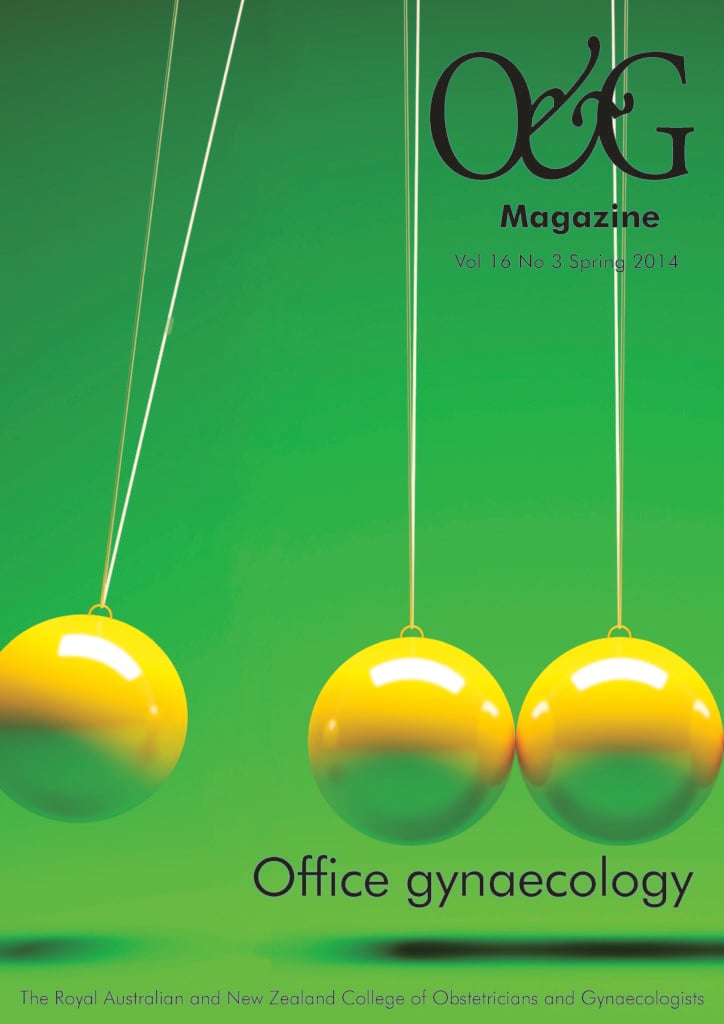Office gynaecology is a mainstay of practice for many of the readers of O&G Magazine and may well become more important in the future, with pressure to deliver more care on an outpatient basis. While the topics covered by the articles in this issue may seem familiar, in each case there are advances in techniques, therapy and accepted practice that can add to the armoury of clinicians.
One theme of this issue is that procedures that may previously have been performed in the operating theatre are now available in the outpatient setting, especially in the case of hysteroscopy. Two articles, one by Khadoun Aweidah and another by Nomiko Kobayashi and Boon Lim, describe the equipment and practice of office hysteroscopy. Using small-diameter modern hysteroscopes and a non-speculum vaginoscopic entry technique, women can receive diagnostic and other hysteroscopic procedures without the need for a general anaesthetic. Astrid Budden reports on her experiences in outpatient hysteroscopic insertion of the Essure sterilisation device. She reports performing over 200 cases, mostly without anaesthesia, providing an alternative to laparoscopic sterilisation.
In addition to procedural articles, this issue further discusses common gynaecological consultations. There are excellent updates on the management of chronic pelvic pain, polycystic ovarian syndrome, contraception, infertility, vaginal discharge and other common presentations. Finally, there are two articles on cervical dysplasia. Louise Farrell provides an update on colposcopy while Ian Hammond gives a succinct summary of the impending changes in the Australian National Cervical Screening Program, proposed to begin in 2016. These changes represent a substantial change in screening frequency and technique with a two-yearly Pap smear being replaced by a five-yearly HPV test and are essential reading for anyone involved in cervical screening.





Leave a Reply